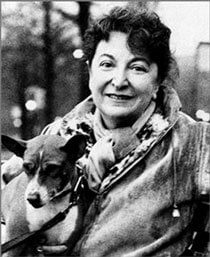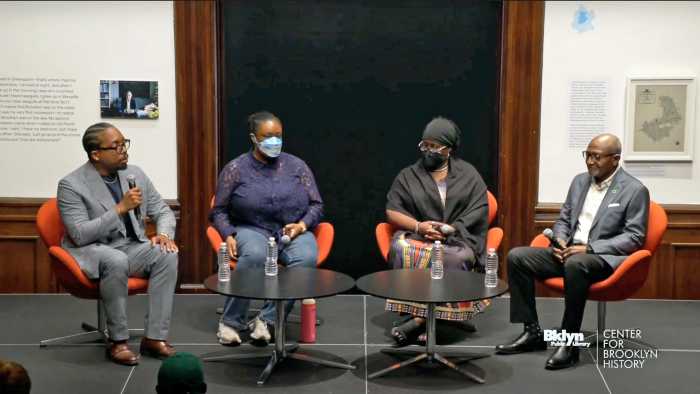Craig Seligman tackles two iconic critics who became touchstones for gay writers
When I first heard the title of Craig Seligman’s book “Sontag & Kael: Opposites Attract Me,” a smile broke across my face. So startling, so seemingly arbitrary was Seligman’s pairing, it smacked of genius.
My second reaction was paranoia—that Seligman had somehow plumbed the depths of my own unconscious. Like many aspiring writers, I too had fallen under the spell of these very different critics in college. (If he had thrown Joan Didion into the mix, then I would really have started worrying…) But to Seligman’s credit, it had never before occurred to me to set side by side, or even to utter in the same sentence, “the two most widely discussed and influential critics in the United States from the amazing era of cultural and political exuberance in the 1960s to the era of ossification that set in during the 1980’s.”
That’s a mouthful—but as justifications go, entirely reasonable. Except that Seligman’s is at heart an unreasonable book. What makes “Sontag & Kael” an absorbing and unusually alive study is, instead, the personal nature of its genesis: “I revere Sontag,” Seligman writes on the book’s second page. “I love Kael.”
Seligman ostensibly sets up the book as a grudge match, “a book with a hero and a villain.” But the real drama isn’t in an unspoken quarrel between two larger-than-life literary personalities—though that animates it, too. It’s in Seligman’s deeper argument with himself that gives the book its charge: Is the greater thinker necessarily the greater writer? Or does emotion have a place in criticism, too?
Seligman’s heart lies with Kael. In her 30 years as film critic at The New Yorker, Kael became as justifiably famous for her conversational writing style as she did for her sometimes-inflated opinions about movies. Seligman describes that voice as “exuberant, excessive, intimate, emotional, and, of course, funny”—adjectives that could as easily describe Seligman’s prose as well. (An erstwhile editor for The New Yorker and Salon, and an occasional reviewer, Seligman is a far lesser-known critic than either of his subjects, which makes his bravery in taking them on all the more laudable.)
Kael may not have single-handedly legitimized film criticism—in fact, her enemies claim that her love of “trash” de-legitimized it—but she did a great deal to make writing about movies an entertainment in its own right.
Sontag, meanwhile, is the formidable intellect. Since publishing her first book of essays, “Against Interpretation,” in 1966, she has never been far from the public eye. Glamorously aloof and controversial, she has written on such highbrow figures as Jean Cocteau, Walter Benjamin, and Jack Smith. Her essay “Notes on Camp” made her a touchstone for gay culture vultures. She has also become notorious for her at times foolhardy radicalism, endorsing, in the 60s, North Vietnam and Cuba as superior political regimes (oops).
Sontag has since turned much of her writerly energies toward novels—her most recent, “In America,” won the National Book Award in 2000— but as Seligman rightly notes, “even when the fiction is hitting its best and truest notes, it doesn’t touch the mastery of her criticism.”
For all her erudition, her awards and her renown, Sontag is still, for Seligman, a tough nut to crack.
“Her voice doesn’t draw me as Kael’s voice does; in fact it frequently puts me off,” he writes. It’s a style “as colorless, as odorless, and as intoxicating as vodka.”
Effective as foils, Sontag and Kael are ultimately more compelling in their similarities. Intimidating and aggressive, the two women never pulled their punches. Both writers ruffled opponents by adopting what was then seen as a “masculine” tone in their writing. (I don’t advocate gendered reading, I merely report it.) So assertive is Sontag that she seldom bothers to back up her claims with proof and rarely quotes the text she’s discussing.
Kael, meanwhile, wears the drag of an outlaw cowboy, a tough talker always shooting from the hip. In the introduction to “For Keeps,” her collected movie reviews, she writes, “The most unlikely men—and women too—suddenly turned macho around me… I think that the disjunction between my strong voice as a writer and my five-foot frame somehow got to people . . .”
This assumption and disruption of masculine power makes both Kael and Sontag beacons for gay readers and writers, including Dale Peck, who in his new collection of book reviews, “Hatchet Jobs,” cites “Against Interpretation” on more than one occasion; Wayne Koestenbaum, who with his hybrid academic-popular criticism is a bastard child of Sontag; and theater critic Ben Brantley who cites Kael, a movie not a theater reviewer, as his critical paragon. Both Sontag and Kael would hate to be called such, but they are our divas of letters.
So it ironic that both critics end up weathering accusations of homophobia. Seligman spends much of the book defending the writers from their opponents—often splendidly—and he is especially impassioned about dispelling this particular grievance. But on this point, the more impassioned he grows, the less convincing he becomes. Addressing D.A. Miller’s attack on Sontag’s latent homophobic rhetoric in her essay “AIDS and Its Metaphors.” Seligman retorts, lamely, “For Christ’s sake, Sontag is gay.” Yet elsewhere, he chastises Sontag for not coming out of the closet. Can you really have it both ways?
A better approach to the homophobia issue might have involved Seligman interrogating his own obsession with these two women. Why, of all possible writers, would a gay man choose Sontag and Kael as intellectual mentors? Seligman devoted years of his life to swimming in Sontag and Kael’s work. And as the subtitle makes clear, it’s a deeply personal, vaguely sexual connection that he shares with the writers. While Seligman doesn’t rationalize his obsession, he doesn’t account for the queerness of it, either. There is a pat Freudian reading of Seligman’s book—an overly influential mother figure (Kael) and a stern, distant father figure (Sontag)—that’s almost too tempting to make. Much more fascinating would be Seligman’s own take on the issue.
There are some other minor annoyances in Seligman’s writing—a tendency to overstate Kael’s importance (that her writings are “one of the signal literary achievements of the second half of the twentieth century”) and a sometimes-antic overuse of italics (“And she pulled it off within the ludicrous confines of movie reviewing.”). But such things can be and should be overlooked in this otherwise bravura performance, evoking a period when intellectuals ruled the earth and writing well was the best revenge.
We also publish:


































